Accretion disks
A star, during the first few tens of millions of years of its life, is surrounded by a thin disk called an accretion disk; this disk is related to axial outflows called astrophysical jets (see Fig.1). The word accretion is used because in the disk plane there is a continuous radial inflow of matter coming from far away. A long-standing question is how the angular momentum of the inflowing matter is removed because without such removal the inflowing matter would rotate much faster around the star than observed. An answer to this question is proposed by taking account that, In the presence of a magnetic field, the ordinary law of conservation of angular momentum does not hold for charged particles-- instead a more generalized quantity called canonical angular momentum is what is conserved. By numerically calculating the trajectories of colliding electrons, ions, and neutral particles, the conservation of canonical angular momentum conservation was validated. This calculation showed that in the presence of the star’s gravitation field, ions move radially inward towards the star and electrons move radially outward with the consequence that both ions and electrons gain canonical angular momentum. This gain of charged particle canonical angular momentum is simultaneously balanced by a loss of neutral molecule conventional angular momentum so that the total canonical angular momentum of the system is conserved. This behavior is dramatically seen in animations of the trajectories of all three types of particles in an accretion disk orbiting a star (see Fig. 2). Details are in the paper: Zhang, Yang and Bellan, Paul M. (2022) Neutral-charged-particle Collisions as the Mechanism for Accretion Disk Angular Momentum Transport. Astrophysical Journal, 930 (2). Art. No. 167. doi:10.3847/1538-4357/ac62d5.
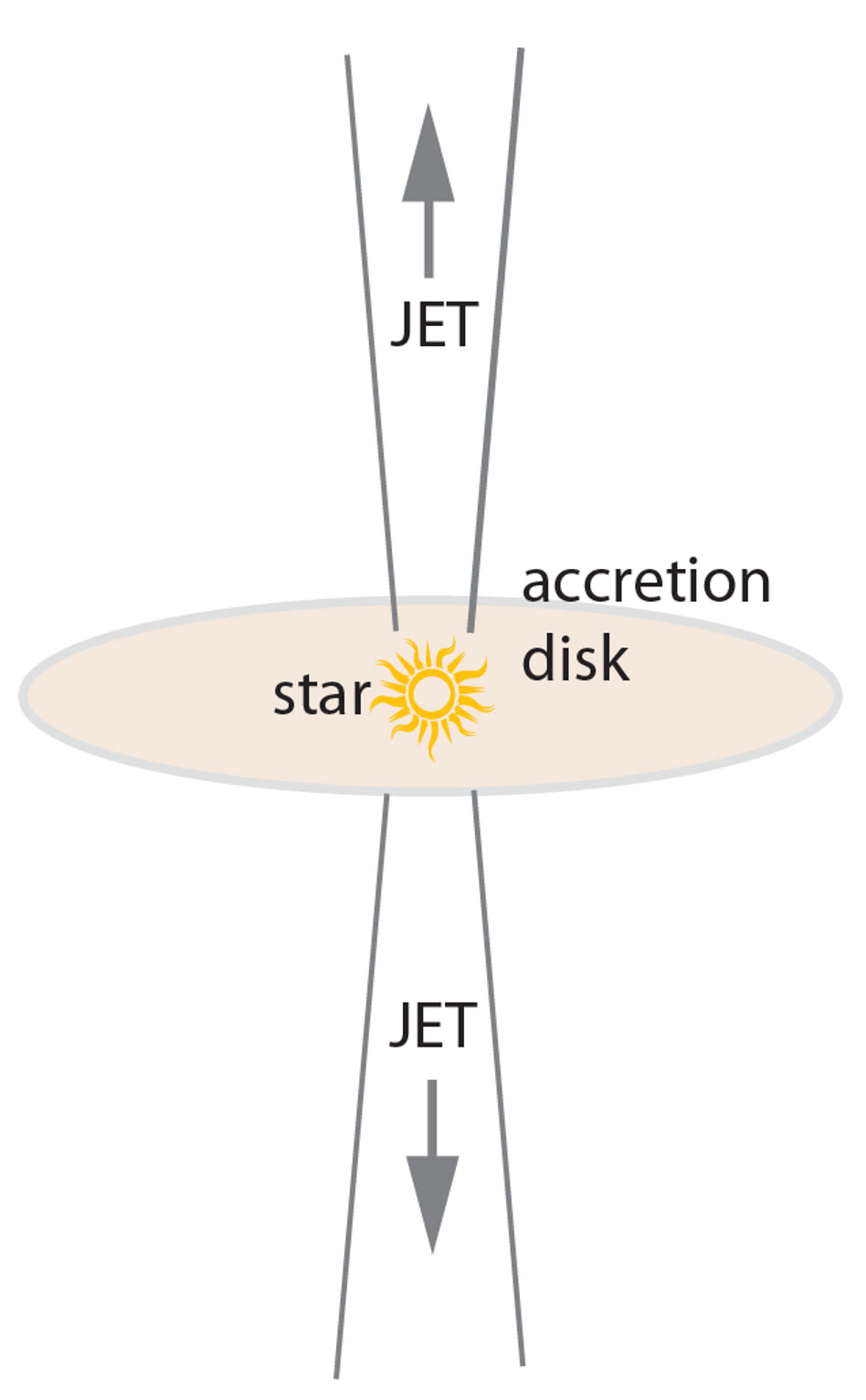
[Figure 1] Sketch showing star, accretion disk, and astrophysical jets
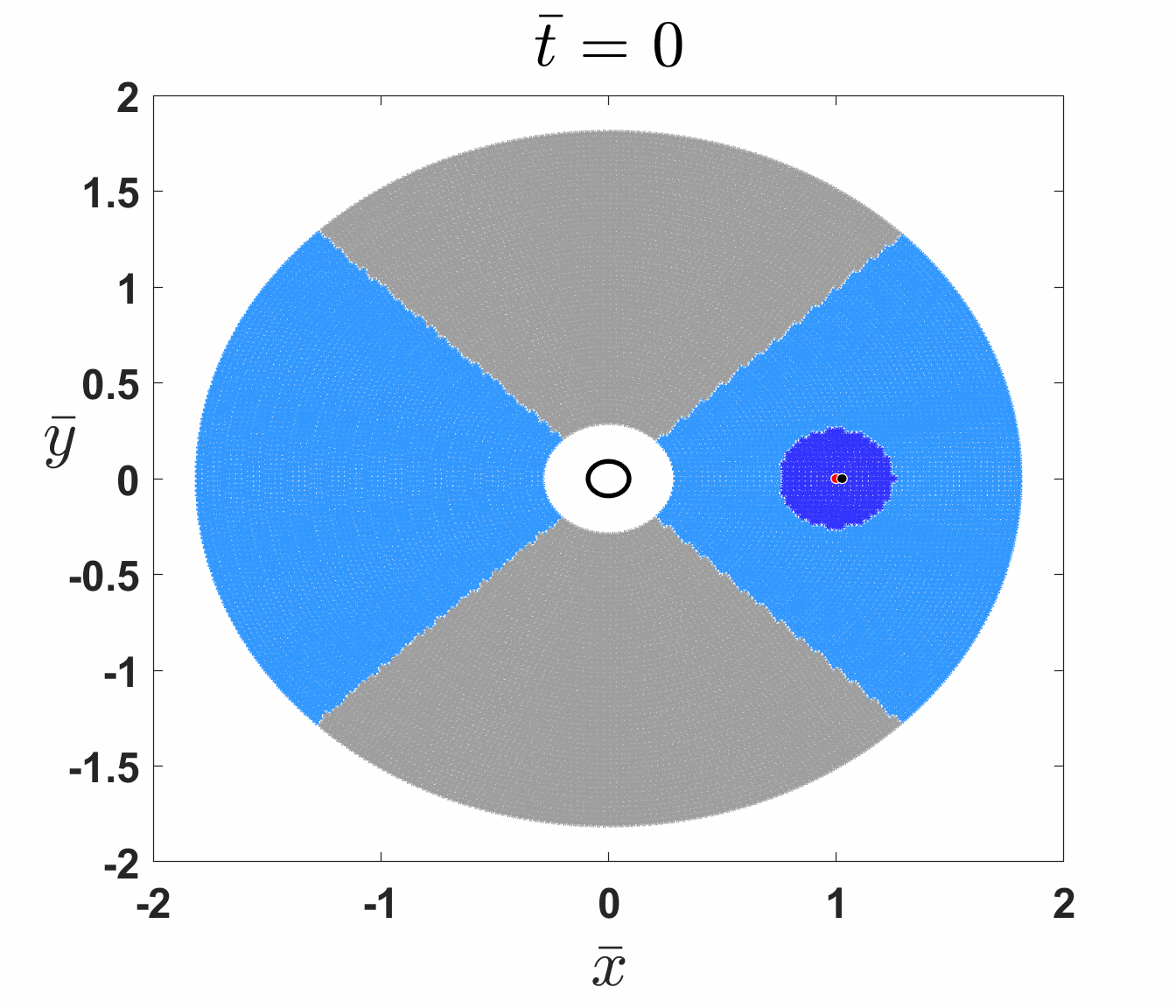
[Figure 2] Numerical calculation of ion (red), electron (black) and neutrals (blue, grey) colliding with each other while orbiting a star and being in a magnetic field. From Zhang and Bellan, Astrophysical Journal, 930 (2). Art. No. 167. doi:10.3847/1538-4357/ac62d5.
Astrophysical Jets
The ion radial inflow and electron radial outflow described in Item 1 above results in accumulations of positive charge at small radius and negative charge at large radius. This corresponds to a disk-shaped battery having its positive terminal at small radius and its negative terminal at large radius. Such a battery could drive electric currents along the disk axis. This is the geometry of both an astrophysical jet and a laboratory experiment in the Bellan Plasma Group Lab. The lengths of real astrophysical jets range from several times the diameter of the solar system to millions of times larger. The lab experiment follows the same basic physics but its length is less than a meter (see Fig.3). Real astrophysical jets last millions of years whereas the lab jet lasts just tens of microseconds. The lab jet goes through a reproducible sequence: first the jet is established, then it lengthens, then it develops a corkscrew-like kink instability, then the lateral acceleration of the kink instigates a Rayleigh-Taylor instability (instability of a heavy fluid on top of a light fluid), and then the Rayleigh-Taylor instability instigates a combination of magnetic reconnection, x-ray bursts, and whistler wave emission. These effects are discussed in detail in:
Bellan, Paul M. (2018) Model for how an accretion disk drives astrophysical jets and sheds angular momentum. Plasma Physics and Controlled Fusion, 60 (1). Art. No. 014006.
Zhai, Xiang and Bellan, Paul M. (2016) A hybrid Rayleigh-Taylor-current-driven coupled instability in a magnetohydrodynamically collimated cylindrical plasma with lateral gravity. Physics of Plasmas, 23 (3). Art. No. 032121.
Moser, Auna L. and Bellan, Paul M. (2012) Magnetic reconnection from a multiscale instability cascade. Nature, 482 (7385). pp. 379-381. ISSN 0028-0836. doi:10.1038/nature10827.
Kumar, Deepak and Bellan, Paul M. (2009) Nonequilibrium Alfvénic Plasma Jets Associated with Spheromak Formation. Physical Review Letters, 103 (10). Art. No. 105003. ISSN 0031-9007. doi:10.1103/PhysRevLett.103.105003.
You, S. and Yun, G. S. and Bellan, P. M. (2005) Dynamic and Stagnating Plasma Flow Leading to Magnetic-Flux-Tube Collimation. Physical Review Letters, 95 (4). Art. No. 045002. doi:10.1103/PhysRevLett.95.045002.
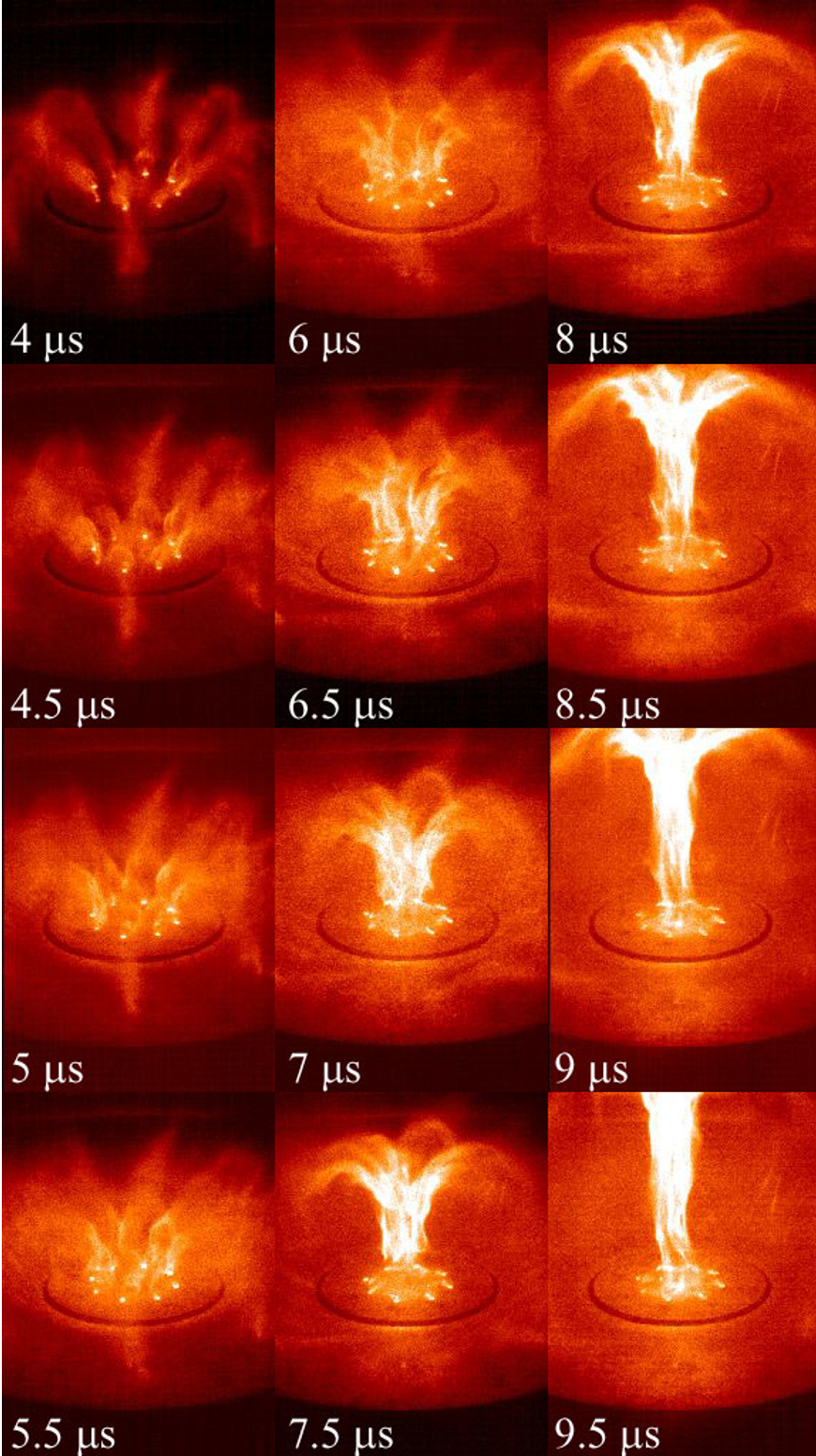
[Figure 3] Laboratory experiment simulating an astrophsyical jet. From You, Yun, and Bellan Physical Review Letters, 95 (4). Art. No. 045002. doi:10.1103/PhysRevLett.95.045002
Spheromaks
Spheromaks are a tokamak-like plasma configuration intended for fusion power with the attractive feature that spheromaks are self-organizing so, in principle, a fusion reactor might nearly build itself. This strange feature results from a fundamental principle wherein magnetic helicity, a topological quantity related to knottedness, is much better conserved than magnetic energy. This means that magnetic helicity is effectively conserved while magnetic energy is not, so the consequence is that the plasma tries to relax to a minimum-energy state while conserving its magnetic helicity. Thus, the self-organization consists of the plasma spontaneously relaxing to a unique minimum-energy, conserved-helicity state (see Fig.4). Because spheromaks are self-organizing, they can be made in a multitude of ways. A common method starts with the geometry of the astrophysical jet experiment and in fact depends on the sequence of instabilities observed in the astrophysical jet experiment. These instabilities are essentially the means by which the system relaxes to a spheromak state. Thus, the experimental and theoretical studies in the Bellan plasma group simultaneously advance understanding of accretion disks, astrophysical jets, and spheromaks. A collaboration is underway with Helicity Space LLC who are using spheromak concepts to develop a fusion-rocket engine; this uses a peristaltic compression scheme proposed in 1979 by Paul Bellan.
Book: Magnetic Helicity, Spheromaks, Solar Corona Loops, and Astrophysical Jets by P. M. Bellan (World Scientific, 2018)
Bellan, Paul M. (1979) Spontaneous, Three-Dimensional, Constant-Energy Implosion of Magnetic Mirror Fields. Physical Review Letters, 43 (12). pp. 858-861.
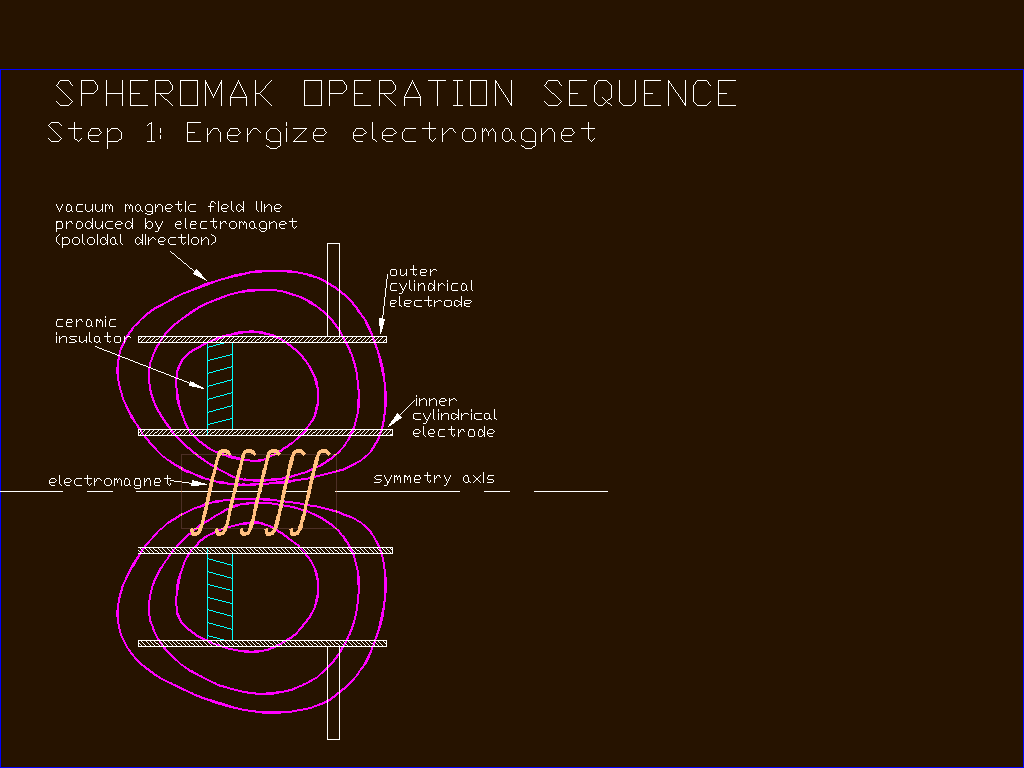
[Figure 4] Spheromak formation sequence is like blowing a magnetic bubble.
X-ray and other diagnostics
The jet and solar experiments emit approximately 1 microsecond long x-ray and extreme ultra-violet (EUV) bursts. These bursts occur in association with the kink-instigated Rayleigh-Taylor instability. Special high-speed x-ray and EUV diagnostics have been developed to measure these bursts (see Fig.5) and it is presumed that they could be related to the X-ray bursts associated with solar flares.
Papers:
Marshall, R. S. and Flynn, M. J. and Bellan, P. M. (2018) Hard x-ray bursts observed in association with Rayleigh-Taylor instigated current disruption in a solar-relevant lab experiment. Physics of Plasmas, 25 (11). Art. No. 112101. ISSN 1070-664X. doi:10.1063/1.5054927.
Seo, Byonghoon and Bellan, Paul M. (2017) Spatially translatable optical fiber-coupled heterodyne interferometer. Review of Scientific Instruments, 88 (12). Art. No. 123504
Chai, Kil-Byoung and Bellan, Paul M. (2013) Extreme ultra-violet movie camera for imaging microsecond time scale magnetic reconnection. Review of Scientific Instruments, 84 (12). Art. No. 123504.

[Figure 5] Burst of Extreme Ultraviolet light coming from kinked jet at location of Rayleigh-Taylor instability from Chai, Zhai, and Bellan 2016
Solar Corona
The arch-shaped structures protruding from the solar corona can be thought of as either half-spheromaks or two astrophysical jets pointing at each other. Laboratory experiments (see Fig. 6) using the same technology as the jet experiments but with different geometrical boundary conditions produce laboratory-scale models of solar corona loops. The length and time scales are about a billion times smaller than actual solar corona loops but the evolution is similar; this is not surprising because the gross behavior of both solar loops and the lab experiments are governed by ideal magnetohydrodynamics and this can be scaled from the lab to the solar situation. The laboratory simulations of solar loops similarly exhibit kink instabilities, Rayleigh instabilities, and x-ray bursts.
Papers:
Bellan, Paul M. (2020) Caltech lab experiments and the insights they provide into solar corona phenomena. Journal of Geophysical Research. Space Physics, 125 (8). Art. No. e2020JA028139. ISSN 2169-9380. doi:10.1029/2020ja028139.

[Figure 6] Time sequence of lab simulations of solar corona loop
Magnetosphere
The Earth’s magnetosphere exhibits many types of plasma waves. Two especially important types are Alfvén waves (very low frequency) and whistler waves (much higher frequency). Magnetospheric dynamics is strongly determined by magnetic reconnection, a phenomenon wherein under sufficient stress the magnetic field suddenly breaks and then reconnects to form a different topology. A rough every-day analog is the blowing of soap bubbles where a soap film breaks off from a wand to form an isolated bubble (see Fig.4). Whistler waves are closely related to fast magnetic reconnection. Unlike older models of reconnection that predicted a slow reconnection dependent on particles colliding with each other, this fast whistler-related reconnection does not involve collisions. Whistler waves have been observed to occur in association with magnetic reconnection in the laboratory jet experiment. A theoretical model has shown that canonical momentum, an extension of momentum that includes a magnetic effect on charged paaticles, is intrinsic to collisionless magnetic reconnection. The model shows that the fast reconnection process can be intuitively understood in terms of the evolution of canonical vorticity flux tubes (see Fig.7). Relativistic electrons can have a strong resonant interaction with whistler waves. This resonance occurs when the Doppler-shifted frequency experienced by a relativistic electron equals the electron cyclotron frequency, the frequency with which an electron rotates about a magnetic field line. The energy resulting from this resonant interaction tends to kick the electrons out of resonance but when out of resonance the electrons tend to fall back into resonance. The situation is much like a particle bouncing in a potential well. This bouncing changes the angle electrons make relative to the magnetic field and offers an explanation for why electrons escape from the Van Allen radiation belts, hit the upper atmosphere, and make aurora. The kinetic Alfven wave (KAW) has a much lower characteristic frequency than the whistler. A method has been developed for measuring the k-vector of certain waves such as the KAW using only a single spacecraft and this method has been successfully demonstrated by the Magnetospheric Multiscale spacecraft mission.
Papers:
Yoon, Young Dae and Bellan, Paul M. (2017) A generalized two-fluid picture of non-driven collisionless reconnection and its relation to whistler waves. Physics of Plasmas, 24 (5). Art. No. 052114.
Gershman, Daniel J. and F-Viñas, Adolfo and Dorelli, John C. et al. (2017) Wave-particle energy exchange directly observed in a kinetic Alfvén-branch wave. Nature Communications, 8 . Art. No. 14719. ISSN 2041-1723. PMCID PMC5380972. doi:10.1038/ncomms14719.
Bellan, P. M. (2016) Revised Single-Spacecraft Method for Determining Wavevector k and Resolving Space-time Ambiguity. Journal of Geophysical Research. Space Physics, 121 (9). pp. 8589-8599. ISSN 2169-9380. doi:10.1002/2016JA022827.
Bellan, P. M. (2013) Pitch angle scattering of an energetic magnetized particle by a circularly polarized electromagnetic wave. Physics of Plasmas, 20 (4). Art. No. 042117.
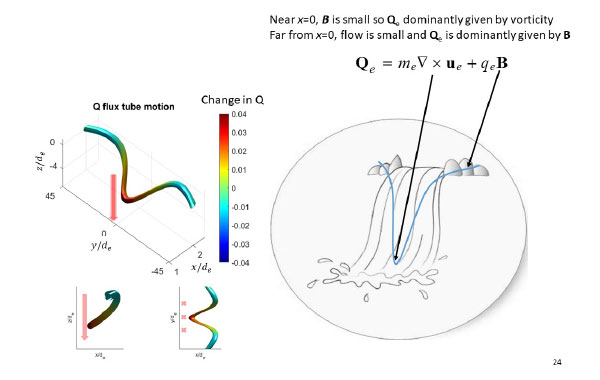
[Figure 7] Stretching of canonical voriticity flux tube as foundation for fast reconnection (Yoon and Bellan 2017)
Ice dusty plasma
Plasmas are usually presumed to be hot since ionization requires enough energy to pull an electron from a neutral atom. However, more complex situations exist and the ice dusty plasma in the Bellan Plasma Lab mixes both hot and cold. The electrons are at tens of thousands of degrees but the ions, neutrals, and ice are at cryogenic temperatures. While interesting for its own sake, the ice dusty plasma also is relevant to accretion disks and may also be relevant to comet tails, Saturn’s diffuse rings, and a thin layer in Earth’s mesosphere (region about 80 km altitude). In all these situations the plasma is very weakly ionized with electrons a few tens of thousands of degrees while everything else is at cryogenic temperatures. The Bellan Lab ice dusty plasma experiment (see Fig.8) involves spontaneous nucleation of ice grains in this strange environment. The ice grains grow into needle-like shapes that are trapped in the plasma. The grains can form interesting formations such as lattices and vortices. Furthermore, the grains tend to repel each other and spontaneously align with each other.
Papers:
Bellan, Paul M. (2022) Mechanism for the Efficient Homogeneous Nucleation of Ice in a Weakly Ionized, Ultracold Plasma. Astrophysical Journal, 936 (1). Art. No. 52.
Marshall, R. S. and Bellan, P. M. (2020) Laser-induced fluorescence measurement of very slow neutral flows in a dusty plasma experiment. Review of Scientific Instruments, 91 (6). Art. No. 063504.
Chai, Kil-Byoung and Bellan, Paul M. (2016) Vortex motion of dust particles due to non-conservative ion drag force in a plasma. Physics of Plasmas, 23 (2). Art. No. 023701. ISSN 1070-664X. doi:10.1063/1.4941973.
Chai, Kil-Byoung and Bellan, Paul M. (2013) Spontaneous formation of nonspherical water ice grains in a plasma environment. Geophysical Research Letters, 40 (23). pp. 6258-6263. ISSN 0094-8276. doi:10.1002/2013GL058268.
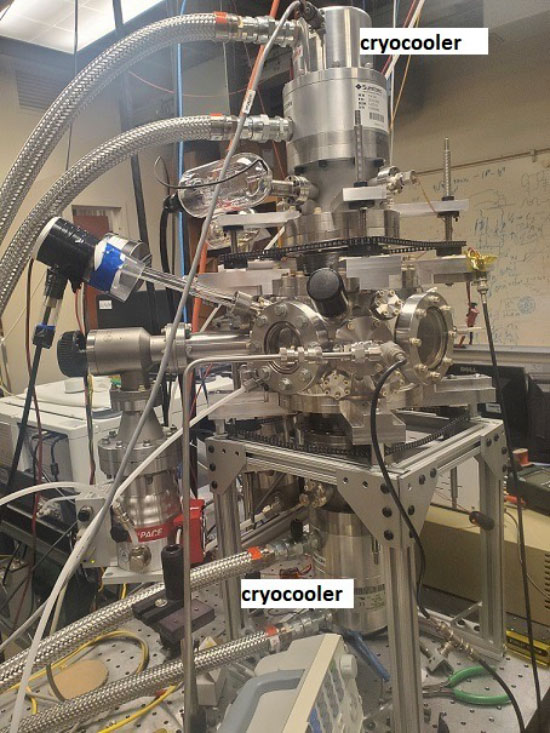
[Figure 8] Ice dusty plasma experiment